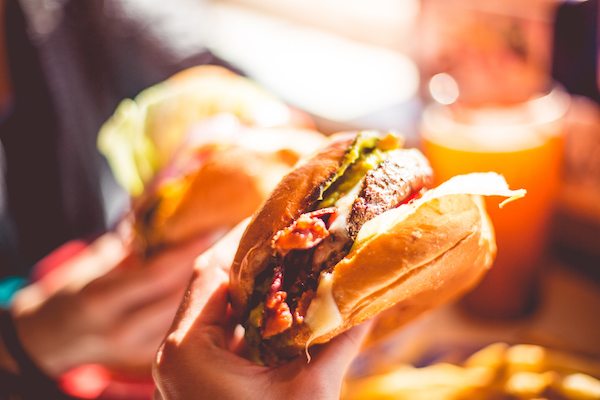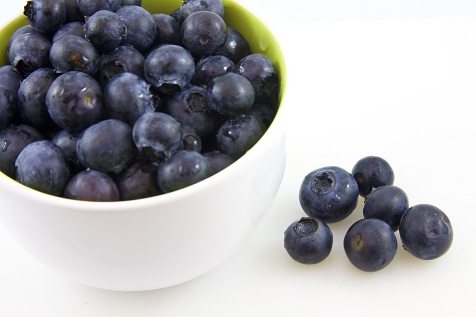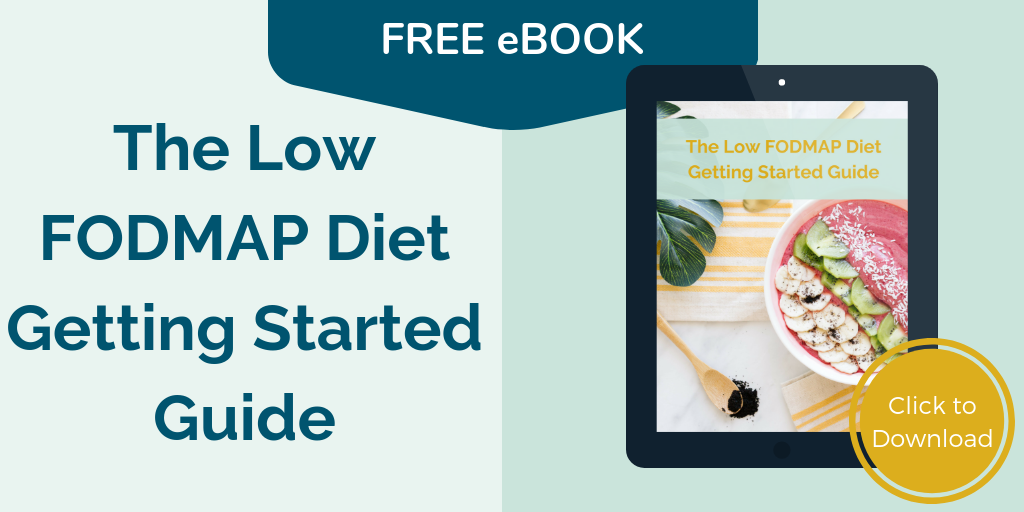Have you ever noticed that when a food is off limits, you seem to crave it more? If you’ve had any experience with the Low FODMAP Diet, maybe you can relate to experiencing cravings for some of those high FODMAP foods that might be off limits. All of a sudden, biting into a crisp apple, savouring a perfectly ripe mango, or enjoying a slice of juicy watermelon on a hot summer day sounds like the most perfect indulgence! Even though temporary, the Low FODMAP Diet can be restrictive, and it’s when we feel deprived that our cravings really kick in.
Today, we are lucky to have Registered Dietitian and fellow FODMAP educator Audrey Inouye here with us! Audrey is also a Certified Craving Change™ Practitioner, and she’s sharing with us some helpful strategies to keep your high FODMAP cravings in check so you can stay on track with the Low FODMAP Diet and achieve symptom relief.
The truth is, most people experience food cravings. These cravings can be even more powerful when you’re following a restrictive diet, such as the Low FODMAP diet. If you read those first two sentences and find yourself nodding in agreement, then you probably also know that food cravings can derail your best of intentions to stick to Low FODMAP foods.

What are Food Cravings?
A craving is a powerful, insatiable desire for a certain food or taste. When a craving hits, sometimes it is the only thing you can think about. As dietitians, we want to help you minimize your cravings so it is easier to eat Low FODMAP and nourish yourself with healthy food.
As a Craving Change™ Practitioner, I like to teach about the different types of hunger you may experience.
The rumbling in your stomach that you feel after not eating for a few hours, that is stomach hunger. When you feel stomach hunger, your physiology is telling you to eat.
Cravings are different. A craving often starts when you aren’t hungry. Think of a craving as either heart hunger or mouth hunger. Sometimes, your heart desires food in response to how you are feeling emotionally or because of a learned behaviour around food and eating. Other times, it is your mouth that wants to eat. Take for example, the smell of fresh baked cookies. Did that thought make your mouth water? That is mouth hunger. Before you reach for food, simply ask yourself, is this heart hunger, mouth hunger, or stomach hunger? If your answer is frequently heart or mouth hunger, then read on for some helpful strategies.
I’ve included an activity with each strategy to guide you. I’m will warn you that some of these activities will take some creative thinking and practice. Let’s get started!
Find Your High FODMAP Triggers
If you’ve been doing your reading on the Low FODMAP diet, you’ve probably encountered lots of advice on how to find and eliminate your high FODMAP trigger foods to avoid symptoms. Here we are talking about a different kind of trigger – the environmental or emotional conditions which trigger you to crave those high FODMAP foods, even when you know they cause symptoms.
Here are some common triggers to get you thinking.
| Trigger | Response |
| Turn the TV on | Eat Doritos |
| Go to the movies | Eat too much popcorn |
| Have a coffee | Buy a scone |
| Feel tired | Overeat chocolate |
| Feel sad | Eat ice cream |
| Hard day at work | Treat yourself to a meal out |
| Someone else is eating it | You want it too |
| Mom baked you a treat | You can’t say no |
Notice the common and repeated triggers you experience, and you will find that most triggers are predictable. They often happen at the same time of day or the same location. Find patterns so you can make a conscious effort to avoid these triggers in the future. What are some of your triggers for eating high FODMAP or unhealthy foods? Was it a feeling like sadness, boredom or fatigue? Are you sensitive to visual trigger like a TV commercial, billboard, or seeing someone else eat?
Activity: Throughout your day, notice what triggers you to eat something high FODMAP. What are your typical responses? Come up with one strategy for how you will change your response next time.
Create a Low FODMAP Environment
There was a fun and informative study done by Brian Wansink (2006) at Cornell University. The study included 40 admin assistants over a 4 week period and a supply of chocolates that were replenished daily. They investigated whether proximity to and visibility of the chocolates impacted how many the admin assistants ate.
Low and behold, when the chocolates were within reach and in a clear candy dish, they ate considerably more than when the chocolates were placed two metres away in an opaque dish. The researchers concluded that when food is visible and within reach, you will eat more, and I totally agree!
Brian Wansink elaborates on how our environment influences what we eat and how much in his book Slim by Design. Look around your workspace, your home and even your car. Are high FODMAP foods visible? If so, change your environment to control your temptations. On the flipside, make low FODMAP choices easy to see and convenient to reach. If you find it challenging to eat two pieces of fruit daily, place a fruit bowl on your counter and include oranges, bananas, kiwi, cantaloupe and other low FODMAP fruit. What else can you do to make your environment work for you, instead of against you?
Activity: Look around your kitchen. Can you see high FODMAP foods in plain sight? If so, find a permanent place for them in a cupboard or fridge. Make the high FODMAP foods difficult to see and inconvenient to access. Position the low FODMAP foods prominently where they are easy to access.
The first step if you’re looking to improve irritable bowel syndrome (IBS) or another digestive disorder or disease, is to understand more about the Low FODMAP diet and if it can help. Download my free eBook to help you better understand this diet and get started implementing simple steps to get rid of symptoms like gas, bloating, pain, diarrhea or constipation related to IBS. Click here to get a copy emailed to you right away.
Strategies for Overcoming Cravings
When you are craving something high FODMAP, your only two options are eat it all or eat nothing, right?
Wrong.
In a research study by Mead and Patrick (2011), participants were divided into three groups and asked to watch a 20 minute video with a bowl of M&Ms. The deprivation group was told not to eat the M&Ms. The satiation group was told to help themselves. The postponement group was told they could snack after the movie. After the movie, all participants were left to eat the M&Ms in private. In the end, which group ate the most M&Ms? You guessed it, the deprivation group.
Both the postponement group and the satiation group ate around the same amount of M&Ms. However, the postponement group felt the least deprived, had a lower desire for chocolate, and ate less chocolate for the entire week following. They also reported the lowest level of deprivation and loss, and experienced more self control for the following week.
What does all this mean? Telling yourself you can have it later works! Postponing dampens the desire and makes it easier to stay within your FODMAP limit. It also buys you time to find a low FODMAP and healthier alternative.
Next time you want something high FODMAP or unhealthy, take a deep breath and pause… Make a plan to treat yourself with something low FODMAP later in the day or when you feel stomach hunger. This action will help decrease your feelings of deprivation and increase feelings of self control.
Activity: Next time you crave a treat, wait. Set a timer if you need to and give yourself permission to eat a low FODMAP treat once your time is up or when you feel stomach hunger.
Nurture or Distract
How many times have you justified a food indulgence by saying or thinking to yourself, “I deserve a treat”? Although treating yourself isn’t a bad thing, frequently rewarding yourself with foods you crave can quickly derail your low FODMAP diet plans. It is a good lifelong habit to find other ways to nurture and distract yourself, that don’t include food, but this task can be very challenging! You have to be creative and choose something that is equally as enjoyable and convenient as food. Here are a few ideas to get you thinking.
- Cup of tea
- Ice cold drink
- Bath
- Paint your nails
- Sudoku puzzle
- Call a friend
- Walk
- Yoga stretches
- Meditate
Activity: Write down three of your favourite ways to nurture or distract yourself. Practice doing them when you feel you need a treat.
Know Your FODMAP Limits and Eat Mindfully
The above four strategies are a great place to start, and might just work to help you overcome some of your food cravings, but what happens in those situations where these tools just aren’t cutting it?
It’s ok to indulge in your cravings, sometimes. Let go of guilt and indulge mindfully, within your FODMAP limit. There are plenty of treats that are low FODMAP. I encourage you to look through the Monash app and know your exact limit for your favourite treats like chocolate, biscuits, popcorn etc. When you do indulge, serve yourself a portion that is within the FODMAP limit that your body tolerates, and put the package away so you are not tempted to dip in again. Eating mindfully while you aren’t distracted with anything else will help you fully enjoy the experience and be satisfied with less. If you eat while on the run, or with horrible feelings of guilt, you will have a harder time calling it quits.
Activity: Pick a low FODMAP treat and check on the low FODMAP serving size. Next time you desire a treat, serve yourself a low FODMAP portion. Remember to turn off distractions, let go of guilt, and do nothing but savour the experience.
Final Thoughts
These strategies really work, but they take practice. Try one or two strategies and see how you feel. Remember that indulging in a high FODMAP treat doesn’t mean you’ve failed, it just means that you need to identify your triggers, change your environment, pause, look for a different distraction, and keep practicing!
References
Mead N, and Patrick, V. In praise of putting things off. Postponing consumption pleasures facilitates self-control. NA-Advances in Consumer Research. 2011; 30-31. http://www.acrwebsite.org/volumes/v39/acr_v39_9282.pdf
Wansink B, Painter JE,Kyoungmi, L. The office candy dish: proximity’s influence on estimation and actual candy consumption. International Journal of Obesity. 2006;871-875. https://ssrn.com/abstract=2474344



